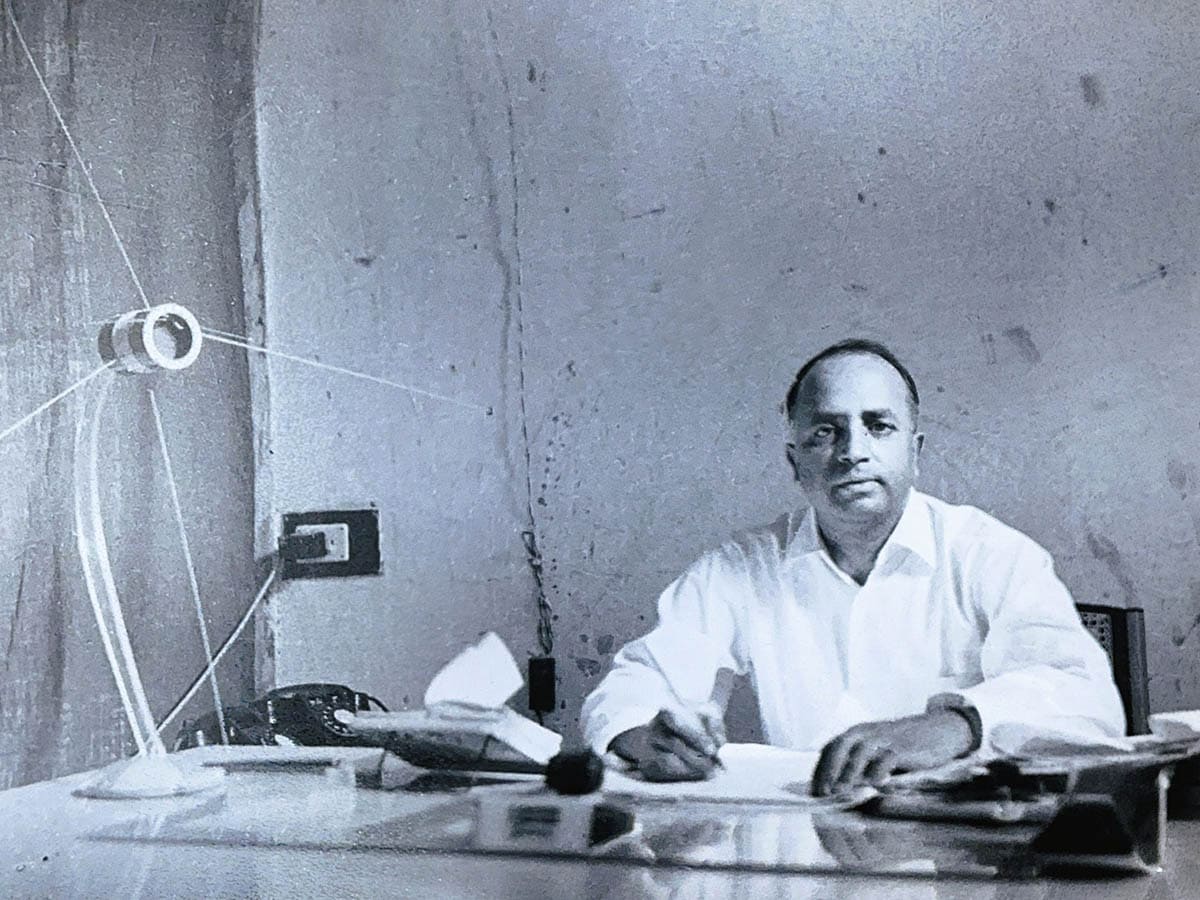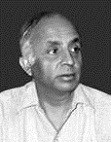
If India has emerged today amongst the global leaders in remote sensing satellite technology and data, a good part of the credit should go to Wing Commander (retired) K R Rao.
As the founder director of the Hyderabad-based National Remote Sensing Agency (NRSA), it was Rao’s remarkable leadership and commitment that helped build the facilities, technology, and expertise to launch Indian Remote Sensing Satellites (IRS) and later exploit the natural resources for development.
Another significant achievement of Keshavamurthy Ramachandra Rao (K R Rao) that put India on the Space Communications map of the world was the successful installation and operational of the 97 ft, steerable antenna in the Arvi Satellite Communications Earth Station in Pune. It was the beginning of antenna control servo systems.
The nonagenarian sadly did not have a long innings in ISRO due to internal issues of the space agency. He moved on being appointed (1982-1998) as the Chief Technical Advisor, Food and Agricultural Organization (FAO) of the United Nations, Hanoi, Vietnam. He implemented a $ 2 million UNDP project on the utilization of remote sensing data for assessing agricultural and natural resources. Advised and assisted the Government of Vietnam on all aspects of remote sensing.
In 1989, Rao migrated to the US and till 2014 was Adjunct Professor; and taught mathematics at various county colleges in New Jersey.

Honoured with a Padmasree in 1973 and decorated with the Ati Visishta Seva Medal by President of India, V V Giri, in1972, Wg Cdr Rao passed away in the US on March 17 at the ripe old age of 98. He lost his wife, Nagalakshmi Rao, in October 2003. He is survived by his daughters, Aruna Rao and Usha Rao, sons-in-law, Premkumar and Vijay Srinivasan.
His phenomenal contributions will continue to impact India’s satellite and space technologies for decades and touch people’s lives, say his colleagues.
Early life
Born in Mysore on February 25, 1926 Wg Cdr Rao had a brilliant academic career. He studied in the Indian Institute of Sciences, Bangalore and also obtained a BE in electrical & communication engineering with top ranks. Initially, he worked as a Technical Assistant in the All India Radio (1948-49), operation and maintenance of high power short wave broadcast transmitters and associated antenna systems.
Rao joined the IAF as a pilot in 1949 and was commissioned in the Technical Signals Branch. He was awarded the Woods of Colchester Prize in 1962 for standing first in his course at the College of Aeronautics, Cranfield University (UK).
NRSA, Hyderabad & Space
If one had reached Balanagar X Roads, the industrial area during the early 1980s, a couple of Institutions stood out—The IDPL (Indian Drugs and Pharmaceutical Ltd), the HAL (Hindustan Aeronautics Limited) and the NRSA ( National Remote Sensing Agency).
While IDPL was into drug research and development and HAL doing avionics for the Aerospace industry, NRSA was involved in establishing and making India a top nation in the area of remote sensing which was just evolving globally. The US, with its Landsat series of satellites (launched in 1972) known as the Earth Resources Technology Satellite was the leader. It was the first earth observing satellite with the express intent to study and monitor the planet’s land resources.
The NRSA was set up under the Ministry of Science and Technology with the initiative of Arcot Ramachandran, the dynamic Secretary and implementation by Wg Cdr Rao and team. Between 1975 and 1982, from a rented accommodation in Secunderabad to its own campus in Balanagar and the earth station to receive satellite imagery at Shadnagar about 55 km away were established. It also moved into the department of space.
The transfer of NRSA to the Department of Space in a way led to discouraging Rao’s continuation. “The dominating forces within ISRO made Rao decided to quit NRSA which was then a well- functioning organisation. I had worked closely with Rao. He was naturally picked up by many international agencies,” recalled Dr Y S Rajan, who worked closely with space visionaries like Vikram Sarabhai, Satish Dhawan, in his social media post.
The US offered to give free access to their Earth Resources satellite LANDSAT data to those who could set up necessary ground station and data processing equipment. It was Ramachandran who got the then PM Indira Gandhi’s approval and the National Remote Sensing Agency (NRSA) was formed in Hyderabad.
Rao with remarkable speed and excellent execution set up many facilities including an aircraft division to create an operational service agency in India (outside ISRO) to receive data from remote sensing satellites and provide user services.
For several years in the 2000s India was the world leader in supplying remote sensing data to which credit should go to Rao who gave the work culture to meet user demands, both in India and abroad, Dr Rajan recalled.
Under Rao’s leadership, the NRSA emerged as one of the top global centres harnessing the power of remote sensing satellites launched by ISRO. He was also instrumental in adding the IIRS Dehradun in NRSA and promoting training activities.
“In a very short period Rao converted Remote Sensing from an idea into an operational tool. He sent almost half his technical manpower to the US to build an earth station. This provided us with invaluable experience in scientific project management. Once data started reaching Hyderabad he lost no time in galvanising the users to make use of it. He had strong support from Dr L R A Narayanan and Prof B L Deekshatulu” recalled Dr R Krishnan, former Director ADRIN and former Dean of IIST.
Incidentally, Narayanan and Deekshatulu succeeded Rao as Director of the NRSA and contributed immensely in consolidating and building its strengths.
One remarkable quality of Rao was his proactive leadership in sending staff to international conferences and short projects/fellowships to countries like the US, Soviet Union and Germany. To achieve this he used his connections with the UN, government of India and powers that be. This helped build strong technical expertise, project management and access to the very latest technology.
Rao was also an affable leader who could identify talent, motivate and reward them. “In 1979, Rao came to Germany. It was an Ocktoberfest event being held at a Church. The Director of the Aerospace Institute near Munich had invited him. Rao ensured that I too attended and we had a party,” recalled S Natarajan, who joined in 1977 in the software development of satellite data and retired in 2004.
Rao was a combination of high technical expertise, leadership and project management recalled R M Vasagam, a specialist in satellites and launch vehicles including the first director of project APPLE (India’s first geostationary communication satellite project).
Wg Cdr Rao led a 3-member team that included Commander Kohli from the Indian Navy and Rogers from the Overseas Communications Services of AIR in implementing the UNDP supported ESCES project in record time. From the UNDP experience he was given the leadership of the MASEG (Microwave Antenna Satellite Engineering Group) by Dr Vikram Sarabhai. He also initiated airborne surveys and demonstrated its use in detection of pest problems in coconut trees under an interesting project devised with Dr Pisharoty, Director of the Physical Research Laboratory, Ahmedabad and well known agriculture scientist, Dr M S Swaminathan, he recounted.
Rao was also a Founder Member, Indian National Cartographic Association, a Fellow, Explorer’s Club, US and an exponent of violin and Carnatic music.



